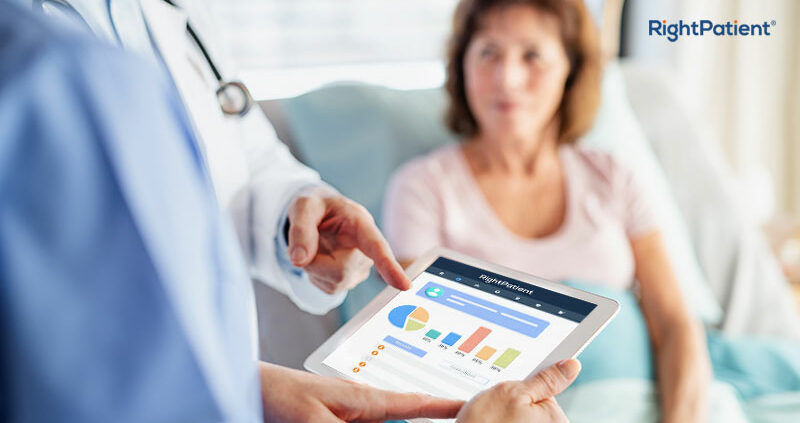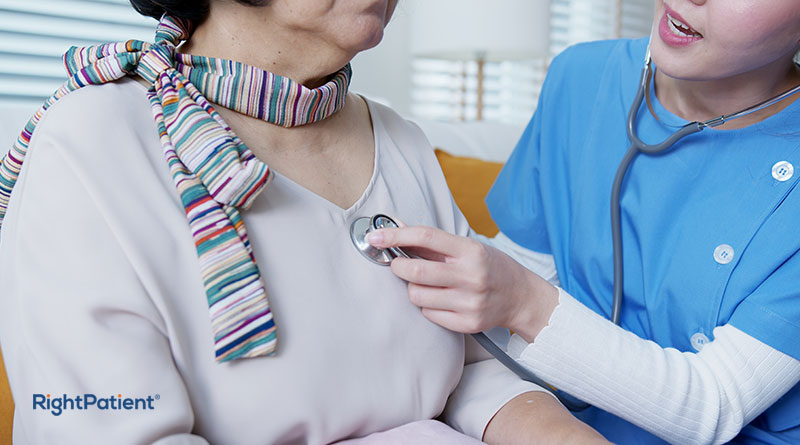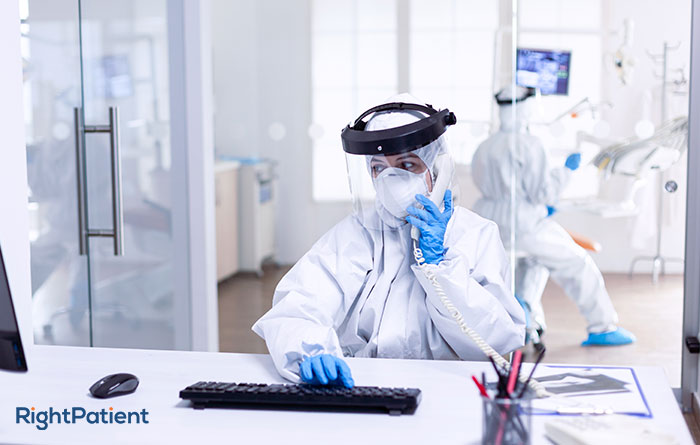Accurate Patient Identification Tops 2022’s Patient Safety Goals

There is a lot going on in the U.S. healthcare industry right now. While some might argue that the industry has always been a dynamic field, which is true, it’s safe to say that the pandemic has pushed healthcare into overdrive. While healthcare data breaches, increased hospitalizations, vaccine booster shots, and oral pills to tackle COVID-19 dominate the news, the Joint Commission has announced next year’s National Patient Safety Goals applicable beginning January 1, 2022.
Unsurprisingly, again in 2022, the number one priority for improving patient safety, as per the Joint Commission, is identifying patients accurately. This highlights the importance of positive patient identification, which we’ve been promoting for a long time. That being said, let’s take a look at the top patient safety goals for 2022, why patient identification has been a topmost priority for years, and how RightPatient can effectively help meet those goals.
What are patient safety goals?
Every year, the Joint Commission collects information on patient safety issues that plague hospitals, health systems, and other healthcare facilities. After collecting all the data via credible sources and experts, the Joint Commission releases a list of goals that healthcare facilities need to implement in order to improve patient safety.
As healthcare is quite broad, the Joint Commission has divided it into chapters such as Ambulatory Health Care Chapter, Assisted Living Community Chapter, Behavioral Health Care & Human Services Chapter, Hospital Chapter, Home Care Chapter, etc. However, in all nine chapters, the number one goal is to identify patients correctly (residents in the case of Nursing Care Centers). This shows how imperative proper patient identification is as it’s the top priority in all the chapters.
That being said, let’s look at next year’s goals for the Hospital Chapter, as that’s our primary focus.
2022’s patient safety goals for hospitals
Next year, according to the Joint Commission, healthcare providers need to focus on the following goals to improve patient safety at their facilities:
- Accurate patient identification
- Improving staff communication
- Using medicine safely
- Using alarms on medical equipment
- Infection prevention
- Identifying patient safety risks
- Preventing errors in surgeries
Comparing them with the goals for 2021, there hasn’t been any significant change in the goals or their order. But why is patient identification always the topmost goal?
Accurate patient identification has been a priority for years
Patient misidentification isn’t anything new. Since there was a ban on creating a state-funded patient identifier around two decades ago, patient identification errors have been quite common. To this very day, a standardized and effective patient identifier doesn’t exist. Since misidentification has led to duplicate medical records, overlays, and medical record mix-ups, they have also created medication administration errors, repeated lab tests, patient data integrity failure, delays in care, transplant mix-ups, and even deaths! As a result, patient misidentification quickly became a patient safety concern.
Every year, healthcare experts come together and demand that the ban against a state-funded patient identifier is lifted. However, to this very day, the ban on the unique patient identifier is in effect.
While different healthcare providers use various methods, solutions, and strategies for accurate patient identification, a touchless biometric patient identification platform like RightPatient is the most ideal and future-proof platform for that. In fact, RightPatient also helps with a few of the other patient safety goals – let’s explore how.
RightPatient helps improve patient safety in several ways
RightPatient is helping several leading healthcare providers enhance patient safety by protecting patient medical records, ensuring accurate patient identification, and reducing infection control issues. It captures patient photos during the registration process and attaches them to EHRs.
For subsequent visits, returning patients only need to look at the camera for verification. RightPatient compares the live photo with the saved one and provides accurate EHRs, preventing mix-ups, duplicates, and other problems associated with misidentification.
RightPatient can be used for remote authentication as well – patients need to provide a selfie along with the photo of their driver’s license after scheduling appointments. RightPatient compares the images, and after a successful match, provides the patients with biometric credentials – check out the video to learn more about it.
RightPatient helps with several patient safety goals:
- It ensures accurate patient identification
- It prevents errors in surgeries by preventing patient mix-ups
- It reduces infection control issues (it’s a touchless experience for both patients and caregivers)
- It improves staff communication as redundant lab tests, mix-ups, and delays are reduced
- It reduces medication administration errors
How are you planning to improve patient safety at your healthcare facilities, and does the strategy include a solution that solves several problems simultaneously as RightPatient does?










Leave a Reply
Want to join the discussion?Feel free to contribute!